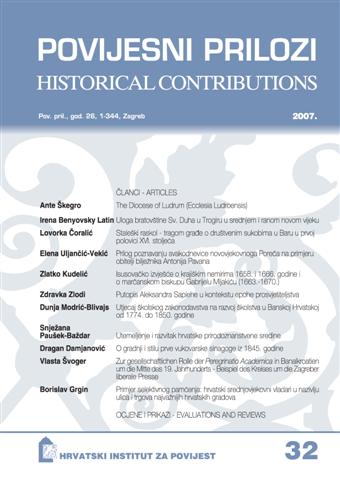Primjer selektivnog pamćenja: hrvatski srednjovjekovni vladari u nazivlju ulica i trgova najvažnijih hrvatskih gradova
An example of selective memory: the Croatian medieval rulers in the names of the streets and squares of the most important Croatian cities
Author(s): Borislav GrginSubject(s): History
Published by: Hrvatski institut za povijest
Keywords: Croatia; medieval rulers; streets; squares; memory
Summary/Abstract: In this paper the author is analyzing an example of selective memory, closely linked with the dominant national ideologies of 20th century Croatia, and with the collective national imagery of the contemporary Croatian state. This case study contains a comparative analysis of street and square names in ten of the largest Croatian cities. An investigation was undertaken into the presence of Croatian and Hungarian- Croatian kings and queens from the first half of the 9th century to the year 1526 in the names of streets and squares of the above-mentioned localities. The status quo was taken into account, and as a tool of analysis, the population census of Croatia from the year 2001 and the maps of Croatian cities were analysed, all sourced from the internet. The results obtained through such analysis were compared on various levels: firstly the frequency of names, secondly the geographical distribution of names, thirdly the local particularities and lastly a comparison between frequency of names of the early medieval Croatian rulers and the later Hungarian-Croatian kings and queens. The initial hypothesis was that there is a huge predominance of streets and squares named after the Croatian early medieval rulers, and that the rulers from the Hungarian-Croatian kingdom are seldom, if at all, ever mentioned. The results of our analysis completely confirmed this initial hypothesis. One could suppose that such a fact could best be explained as a consequence of decades of systematic political and ideological interventions in the public spaces of Croatian cities that were, by no means, uniform and of the same ideological and political inspiration.
Journal: Povijesni prilozi
- Issue Year: 2007
- Issue No: 32
- Page Range: 283-295
- Page Count: 12
- Language: Croatian

